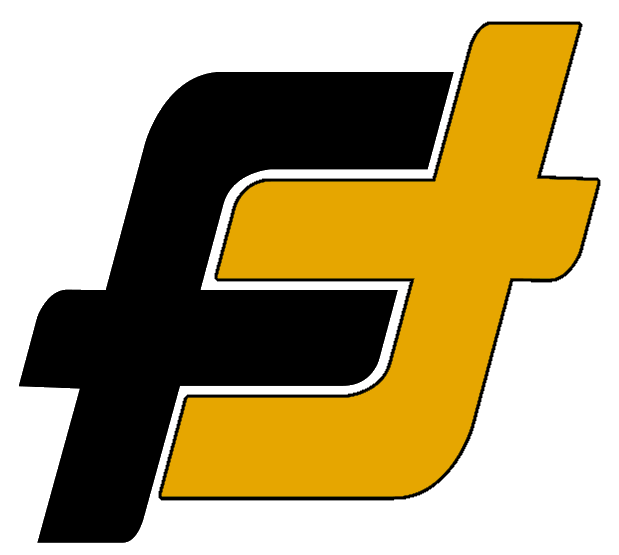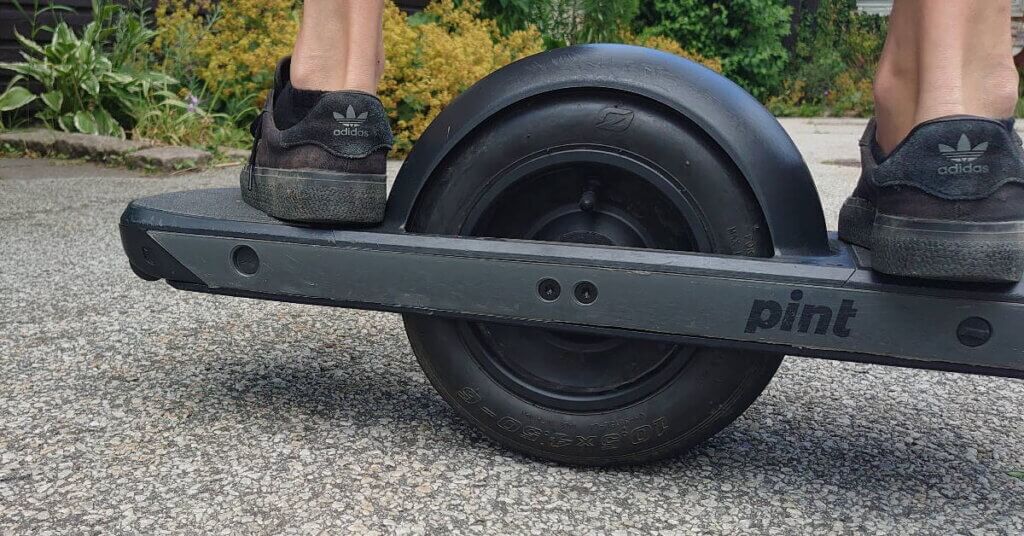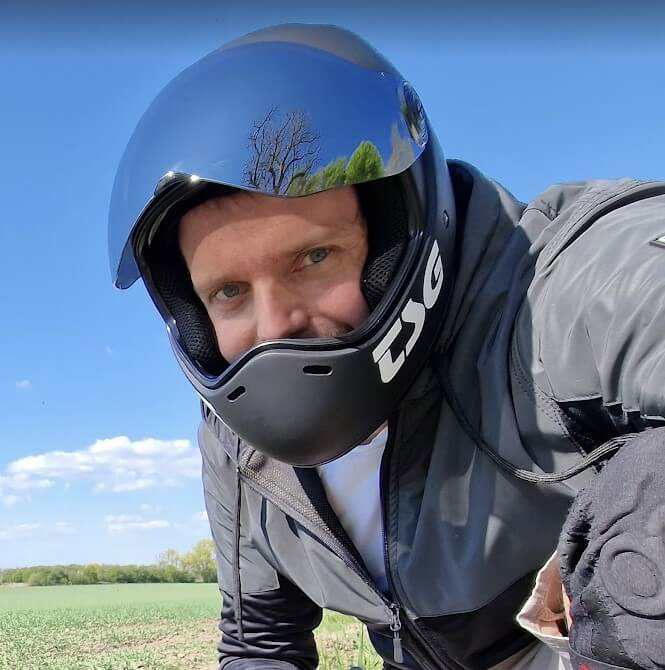When it comes to riding Onewheels, one of the most common questions I encounter is, ‘Are Onewheels hard to ride?’ Many newcomers to the world of Onewheels have little to no prior board experience, and the good news is, you don’t need it.
Learning to ride a Onewheel is not as challenging as it might seem, and you’ll pick it up fairly quickly. However, it’s not a walk in the park either. Respecting the board and understanding your own limitations are crucial, as neglecting these factors could lead to dangerous nosedives.
In fact, I’d go as far as to say that learning to ride a Onewheel is easier than mastering a traditional skateboard, despite the former having only one wheel as opposed to a skateboard’s four.
Let’s break down the process of getting started with riding a Onewheel step by step.”
(Note: The rest of the article continues with detailed instructions on how to start, balance, stop, dismount, turn, and practice riding a Onewheel, along with tips for beginners.)
It is not that hard to learn to ride a Onewheel and learning to ride the board will come quite fast. That being said it’s not easy, you will need to respect the board and know your limitations, or else you might have a dangerous nosedive with the board launching you to the ground.
Choosing the Right Onewheel Model
Before you even start learning to ride, it’s essential to select the right Onewheel model for your needs. There are various models available, each catering to different riding styles and terrains. For beginners, the Onewheel Pint is often a popular choice due to its user-friendly design and manageable learning curve.
More experienced riders may opt for an old XR or the Onewheel GT which are designed for more off-road adventures. Take some time to research and consider your intended use to make the right choice.
Safety Gear Matters
While Onewheeling can be a thrilling experience, safety should always be a top priority. Alongside learning to ride, investing in the right safety gear is crucial. This includes a certified helmet, wrist guards, elbow and knee pads, and even padded clothing like the Lazyrolling Armored Hoodie.
Being well-protected not only reduces the risk of injury but also boosts your confidence when tackling new riding challenges.
How to Start
Mounting and starting the Onewheel is not hard. If it’s the first time you are using the board it’s recommended to charge it fully before taking it out for a ride. A good tip is to stand next to something you can hold on to or have a friend help you with the balance. The first time it’s easy to overload the board and lose balance when the motor kicks in.
If you are uncertain just jump straight off the board, don’t try to balance/ride it out.
- Before starting the Onewheel it needs to be powered on. All board has the power button located on the front left rail. Press the button and the light indicator will turn on indicating that the board is powered on. (stepping onto an unpowered board will most likely result in a fall when trying to engage the motor)
- Step on with your tail foot first, firmly placing it on the back footpad. Depending on if you are goofy or regular this will be your left or right foot. If you don’t know your riding stance check out the guide here.
- When your back foot is in place your front foot, leading foot, onto the front footpad. Make sure to align the foot so both sensors are activated.
- Firmly press down with your leading foot while trying to keep your weight above the wheel. You should not lean forward to press the footpad down, this might result in applying too much force on the footpad for the board to handle. If you overstain the motor the board will slam down into the ground launching you forward, what Onewheel riders call a nosedive. (Read the article to learn more about the mechanics and how to avoid them here)
- The board will level off and the motor engage. Keep both your feet at a level to make the board stand still on the ground.
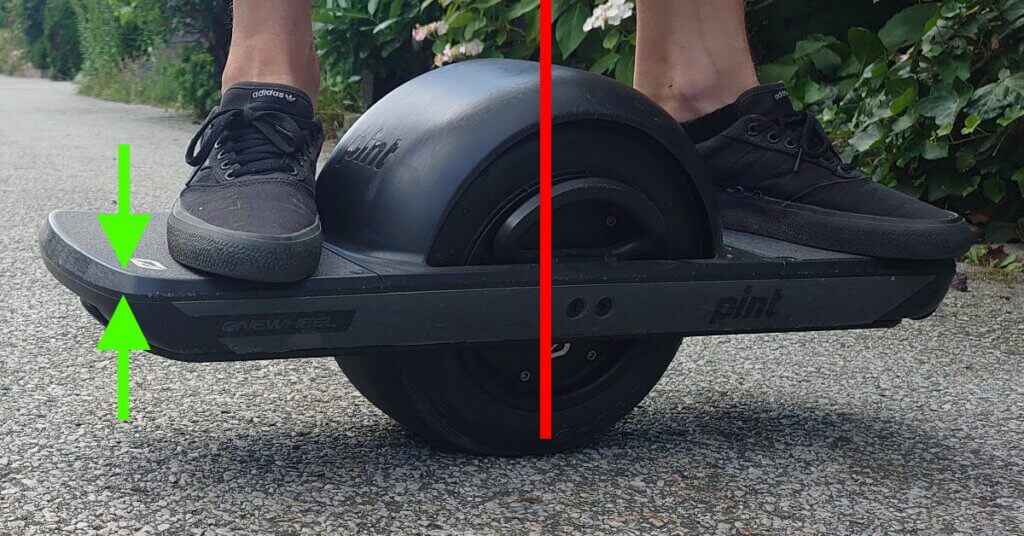
How to Balance
The Onewheel works on the principle that it’s trying to balance you as a rider at all times as the motor is engaged. This is done with multiple sensors that read continuously the angle of the footpad and the board is compensating for the rider’s actions all the time.
This is the reason why balancing on the Onewheel is easy when you start to trust the board and not fight against it. At first, it’s easy to try and do the compensation yourself and many new riders will experience the board wobble back and forth as they try to balance on the board. The key is to take it easy and gently move your feet up and down. Trust the board and keep your weight on top of the motor.
This is the reason why balancing on a Onewheel is easier than a skateboard. The skateboard will not compensate for your movements and depending on where you stand can shoot right out from your feet. That being said the Onewheel is also a dangerous device and even if you only are balancing on the board to have protection, I recommended at least a helmet and wrist guards. For my complete list check my Onewheel Protection Gear List.
If you ever start to feel uncertain and unstable just jump straight up and away from the board. Don’t try and fight it, thinking that you can recover. I did strain my ankle one time doing this.
How to Stop
Stopping on a Onewheel is all about changing the level of the board. When running forward the front pad is tilted down at a slight angle. To slow down and brake, you simply do the reverse and push the board back on the rear pad.
The board will respond and slow down and stop. Remember to try and have your weight centrally over the board to keep it balanced. If you tilt the board backward you will start moving in the opposite direction if you have Simplestop disabled. (Pint, Pint X, and GT got the Simplestop feature read more here)
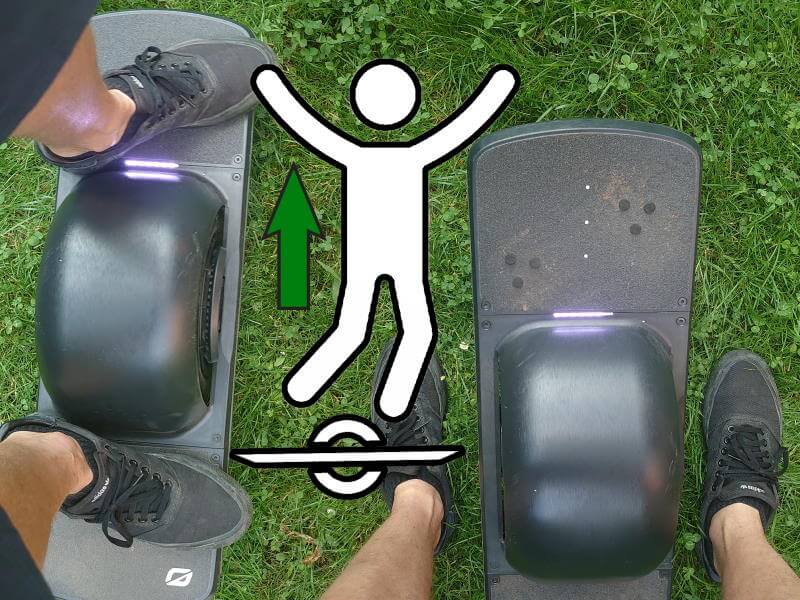
How to Dismount the Board
There are multiple ways to stop and dismount on a Onewheel. The three common are heel lift, Simple stop and step off.
I recommend you read these tips before you start to train dismounting from your Onewheel.
Heel lift
The most common way to dismount from the board is the heel lift method. This is my go-to method on my Pint as I haven’t activated Simplestop. The goal is to deactivate one of the front pad sensors when the board is at a standstill. This will disengage the motor and stop the board.
- Come to a standstill with your weight above the wheel or slightly on your back foot.
- Lift the heel of your front foot up from the sensor, the board will turn off and fall down on the back
- Step off the board.
An alternative to the heel lift is to push your heel/toe forward the front of your Onewheel so it’s not activating the foot sensor.
Tips: One of the first things that tend to happen when new riders try to dismount is that the board “runs away” with them. This happens because when you lift a heel, you instinctively transfer your weight to the other foot. If you do this on a OneWheel, it will roll backward.
Simplestop
If you have a Onewheel Pint, Pint X or GT then you have the possibility to enable the Simplestop feature in the app. When enabled do as follow to stop the board.
- Come to a standstill with your weight above the wheel or slightly on your back foot.
- Slowly go backward, and the board will turn off and fall down on your back foot.
- Step off the board.
Many riders including myself have disabled Simplestop to enable the board to ride in both directions.
Quick stop / Step off (advanced stop)
The quick stop of what also is referred to as step off or stomp dismount is an advanced way of stopping the board. When practicing do this on loose ground and I highly recommend using protective gear. Doing the stop on gravel or dirt allows the wheel to spin if you don’t time the stop correctly. On a surface like concrete, the wheel will stick to the ground and there is a risk that the board is launching itself forward resulting in a fall and a risk that the board hits a person or object.
The technique is about breaking, rolling your foot off the board (turning your foot sideways) in one motion. You have to do it very quickly and put all your weight straight down on your back footpad. This is while rolling/stepping off the front footpad to disengage the motor. You should start practicing at lower speeds just to get comfortable with the motion. The goal is to get the tire to stop instantly without any burnout.
It’s hard to perform it correctly and it all comes down to timing. Eventually, you’ll be able to stop in one fluid motion. A tip is the earlier you begin to roll off your foot during the stop the more fluid it will become. Also the closer you have your front foot to the wheel the less the tire will spin.
How To Turn Without Falling
The Onewheel works by using your toes and heels to control the direction of the board. It’s just like turning in other board sports. The difference is that you are balancing on a single wheel.
If you’re a “regular” foot rider then putting more weight on your toes will make the board turn right and subsequently putting more weight on your heels will turn the board to the left. This is going to be the reverse if you are a “goofy” foot.
Practice turning by applying more or less weight and seeing what happens with the board. And the more you practice, the more you will be able to start to carve the board.
For more tips and tricks on how to practice with your Onewheel check the Onewheel Beginner Guide

Train your balance
It’s way harder to stand still at the same spot on the Onewheel than riding it. Standing still is a trick you often will use if you ride in the city and wait for the green light. If you are a new rider I recommend you to dismount while waiting as balancing on the board requires both attention and some skill. Here is how to start training this skill.
When starting training it’s a good idea to hold onto something like a light post while you train or need to stop. When you become better just a light touch with your finger can be enough to help you balance on the board. It’s a good idea to train yourself to stand still for a couple of minutes every ride. Some riders even train at home holding onto a chair or desk.
How hard is it to balance on an Onewheel?
The Onewheel is self-balancing so you don’t need to keep the board balanced, it will do it for you. The key is to let the board work and don’t fight it. In the beginning, it can be a bit wobbly, relax and the Onewheel will help you find your balance.
Conclusion
It’s not hard to learn to ride the Onewheel, still, there are some skills that you need to know and master before you are heading out in traffic. I recommend you as a new rider take some time to train to dismount, balancing at a standstill every time you head out to ride.
Riding in the city will give you obstacles such as red lights, pedestrians, and other vehicles that will cross or be in your way. Respect other people and ride safely. Take it easy.
For me, the Onewheel was easier to master than the skateboard, even if I did pick up the Onewheel when I was in my thirties. You need to respect the board, after a couple of miles you will start to feel more secure on the board. Then it’s important to still take it easy, many rides have been too confident and tried to hit speed records after just a couple of miles under their feet, resulting in a nosedive and a crash post on Facebook.
Float on!
